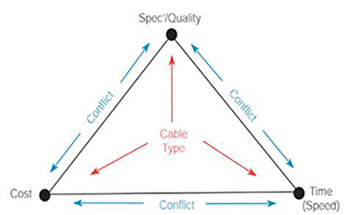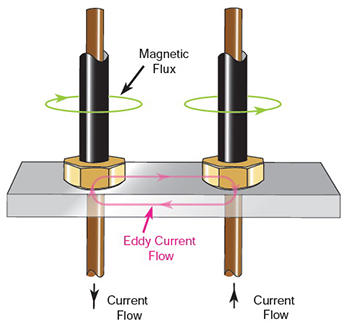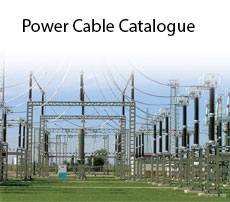
 Technical Information
Technical Information Power And Control Cables
Power And Control Cables Power Appendixes
Power Appendixes Guide to the Wiring Regulations
Guide to the Wiring Regulations The choice of wiring systems
The choice of wiring systems صفحه The choice of wiring systems
| The choice of wiring systems | |
|
The choice of wiring system will depend on a number of factors that the installation designer will need to consider, depending on the particular type of installation, its use, the environment and also any economic constraints. The selection of an appropriate wiring system can be represented as a balancing act between specifcation, cost and time, as depicted in the balance this triangle. |
 |
|
The balance of any one of the three selection parameters is in confict with the other two, and in selecting any one cable type, compromises will need to be made. Maintenance considerations are not shown on this diagram but should be considered under the specifcation parameter. The complex criteria of specifcation will be very much affected by environmental factors and the use by operators. With this in mind, the following points will need to be considered in the specifcation parameter: * Type of installation, domestic/commercial/industrial and impact protection; * Temperature of installation and local heat sources; * Effects of dust and water; * Effects of chemicals, fumes and gases; animals including vermin; * Movement and mechanical vibrations; corrosion including electrolytic corrosion; other environmental factors including wind, seismic effects, solar radiation, hygiene and mould growth. |
|
|
Circulating currents and eddy currents in single-core installations Single-conductor non-ferrous metal sheathed or armoured cables need careful consideration due to the problems of sheath currents and eddy currents. |
|
|
Circulating (sheath) currents Circulating or sheath currents fow in the metal sheaths or armour of single-core cables. All single-core metallic-sheathed cables have a sheath current induced by the a.c. magnetic feld surrounding each conductor. The metallic sheaths and armoured cables are often earth-connected to equipment at both ends, providing a closed circuit path through metal gland plates, enclosures and other metallic paths where sheath currents are permitted to fow, as shown in Figure below . Induced sheath currents cause a heating effect and temperature rise in metal sheaths or armour of single-conductor cables. This is transferred to the cable insulation and depending on the general circuit loading, this additional heat may cause the cable to suffer premature insulation damage. |
|
 |
 |
|
Eddy currents : The same magnetic felds that surround single-conductor cables can also produce eddy currents in the steel enclosures, which completely surround the cables Eddy currents can overheat iron or steel cabinets, locknuts or bushings or any ferrous metal that completely encircles the single-conductor cables. This presents no problem in multi-conductor cables, where the magnetic felds tend to cancel each other out. For single-core cables, it is recommended that these cables enter metal enclosures through a non-ferrous plate (e.g. aluminium) |
|





